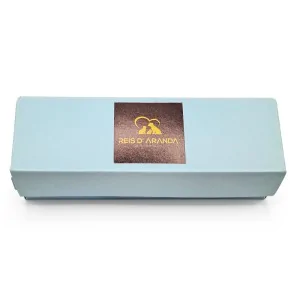Its name says it all: the Vienna blue rabbit comes from Austria. Not only is it beautiful with its shiny blue-grey...
HOW TO PROTECT MY RABBIT FROM THE HEAT?
INTRODUCTION
Rabbits are extremely affectionate and cuddly pets that are endearing because of their small appearance and fluffy fur. However, these same characteristics can cause their bodies to accumulate very high temperatures for their small size and suffer from heat stroke, so it is necessary to know how to protect them from this situation.
RABBITS AND HEAT
Heat stroke is a disorder produced by an increase in body temperature caused by prolonged exposure to the high temperatures and humidity of the environment. This discomfort is also very common in people and animals that carry out strenuous physical activities during hot weather. However, the body temperature that the body should exceed is different for each species, and for rabbits this is not so high.
The ideal temperature for the health of rabbits is between 12 and 21ºC but due to the layer of fur they have, their body temperature can easily rise and it is very difficult to lower it. From 30ºC onwards and with a high degree of humidity, rabbits can suffer from heat stroke.
The main way to know if a rabbit is hot is to pay attention to its ears, as these will turn a reddish colour due to the vasodilation of the blood vessels located in them. However, this is not the only physical symptom of heat in your rabbit:
- Your rabbit's nostrils will look more swollen than usual and its fur may be moist underneath.
- His eyes will be narrowed due to exhaustion from the heat.
- Breathing will be more rapid and you may hear panting coming from him.
- In addition to reddened ears, his ears may feel warm to the touch.
There are also behavioural changes that may alert you to heat stress, such as lethargy and lack of appetite, or if you find your dog lying on the ground more extensively than usual to cool down.
CONTROLLING THE TEMPERATURE
It is very important that we control the temperature of the room where our rabbit is, in this way we can act in time to avoid the temperature rising too high and producing health problems in our rabbit. We can place a digital thermometer on the wall for this purpose.
THE DANGERS OF EXCESSIVE HUMIDITY
A high level of relative humidity in the interior spaces of our buildings is one of the causes of the health problems which the occupants can suffer, as humid surfaces are the ideal environment for the proliferation of micro-organisms (mites and mould). For people without diagnosed respiratory disorders, the recommended relative humidity threshold is 65%. In the case of animals with chronic respiratory problems (asthma or rhinitis), articular problems or very May this threshold is below 60%, as we are talking about particularly vulnerable animals. If we do not have sufficient ventilation to ensure the correct renewal of the air inside the spaces, health problems can be aggravated.
Excessive humidity can lead to various health problems:
- Respiratory infections, due to viral or bacterial infections.
- Asthmatic processes, due to the proliferation of moulds, fungi and mites.
- Allergic disorders, due to poor indoor air quality.
- Worsening of bone diseases (rheumatism or arthrosis), due to the high humidity that affects the bones, especially of the most vulnerable animals such as the elderly.
- General malaise (tiredness, fatigue, headaches...), as a consequence of an unhealthy environment (bad smells and difficulty breathing due to excess humidity and poor ventilation).
TRICKS TO HELP MY RABBIT ON HOT DAYS
Here are some tricks to help our rabbit during the hottest periods:
- Constant good hydration is essential to prevent your rabbit from suffering from dehydration during hot weather, and to avoid heat stroke.
- To keep your rabbit cool and hydrated, you should always keep its water dish full and you can also add ice cubes to keep it cooler for longer. You can also include small pieces of water-rich food (such as lettuce or fruit) that will entice your rabbit to drink and eat them even more.
- As this is where they spend most of their day, the cage should be in a cool place, but not outdoors, but indoors. Ideally it should be in a room where there is an air conditioner, but if you don't have one in the house, fans are also an excellent option as long as they are not pointed directly at the cage, but rotate around it.
- The cage should also be kept out of direct sunlight so that it does not raise the temperature inside. If even with these steps you feel that this is not enough, you can also place a damp towel between the fan and the cage so that the air it blows is cooler.
- Lower the blinds to prevent too much direct sunlight from entering the cage.
- We will clean our rabbit's latrine more regularly, as the dirty substrate is much warmer because of the urine.
- We will brush our rabbit much more often to remove dead hair and knots, which is what gives the most heat (not the hair itself), as it does not allow the skin to oxygenate properly.
- We can put a couple of large bathroom tiles nearby for him to lie on or give him access to the bathroom, as this is the coolest area of the house.
CONCLUSION
A rabbit which has suffered from heat stroke is more likely to suffer from other episodes in the future, as the thermoregulatory system can be damaged. After one of these episodes, the rabbit should be monitored and observed by a specialised veterinarian for at least 24 hours. He will most likely require intensive care (fluids, assisted feeding, oxygen, etc.) for recovery.
Leave a comment
Log in to post comments
















